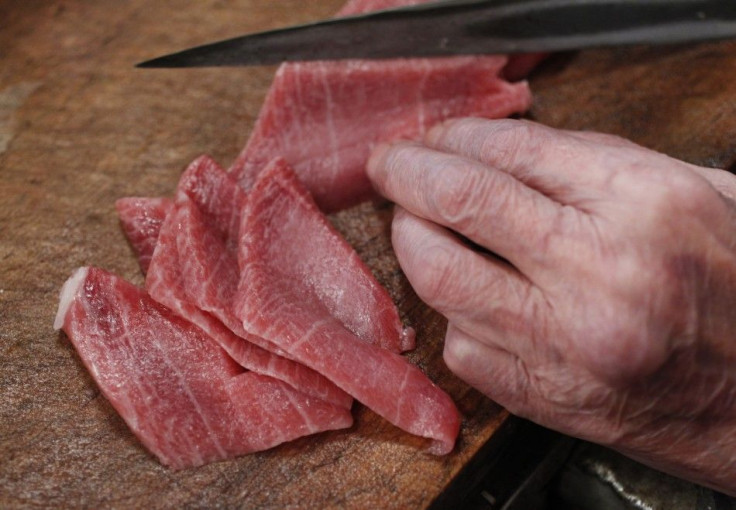Sushi Lovers Are Taking The Pacific Bluefin Tuna To The Verge Of Extinction

The Pacific bluefin tuna is a fish that is extensively used in the dishes named sushi and sashimi. The International Union for Conservation of Nature (IUCN) on Nov. 17 said that the fish is at a risk of extinction because it faces unsustainable pressure from the global food market.
According to Discovery News, IUCN, a body that helps find pragmatic solutions for environment and development issues, updated its "red list" of threatened species. The list showed that apart from the bluefin tuna, the other threatened species are the Chinese puffer fish, American eel, Chinese cobra and Australian black grass-dart butterfly. Once every 10 years, a World Parks Congress, a global forum on protected areas, takes place in Sydney where the list was released.
According to Julia Marton-Lefevre, the director-general of IUCN, every update that is made on the "red list" makes the people realise that the planet is losing out on diversity of life. She blamed it on the destructive actions of the people. She said that people performed these actions to satisfy an appetite for various resources. She continued that protected areas can help reverse the trend and she has scientific evidence to prove that.
Almost 76, 200 species were assessed by the IUCN, and it was found that 22,413 species were under threat. IUCN said the Pacific bluefin tuna was on the "least concern" category before and now had moved to the "vulnerable" category. It said this was due to the Asian markets of sushi and sashimi. In the past 22 years, the population of the tuna had dropped by 19 to 33 per cent and IUCN explained that it was because most of the fish that were caught were juveniles.
Among the other species, the Chinese cobra was also categorised as "vulnerable" because in the last 20 years, its population had dropped by 30 to 50 per cent. The cobra was also popular as a food source in South-East Asian countries.
According to Jane Smart, the bio-diversity head of IUCN, the species had unsustainable pressure on them because of the growing food market. She said that strict limits had to be imposed and appropriate measures had to be taken to protect the habitats of the endangered species.




















